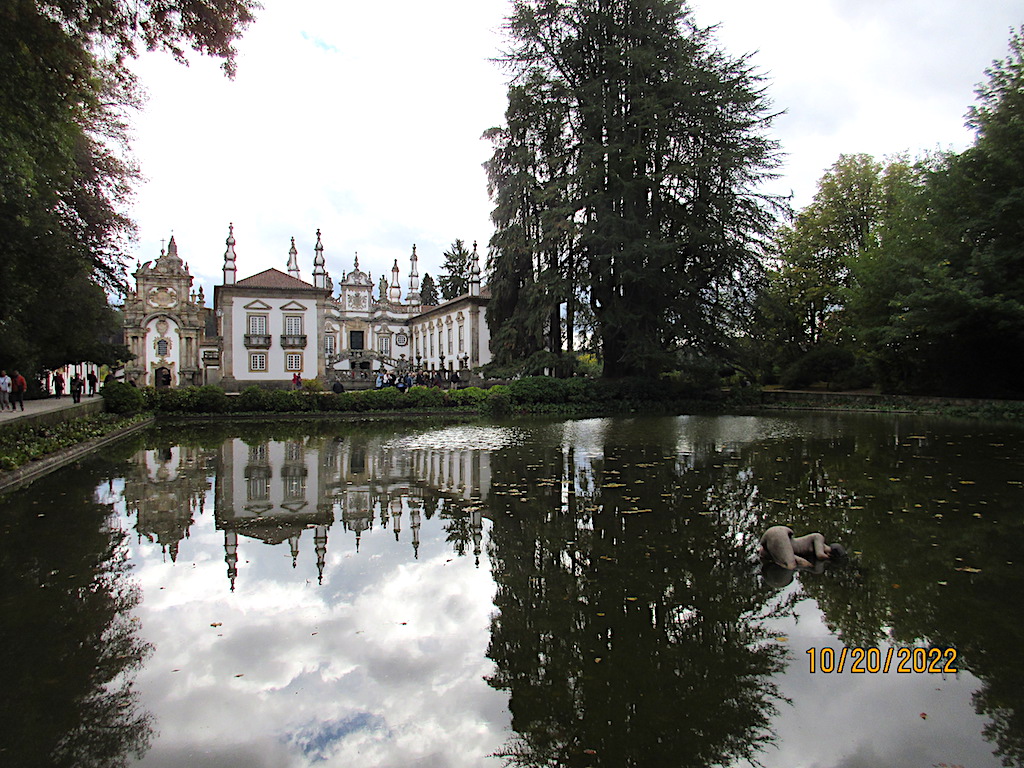
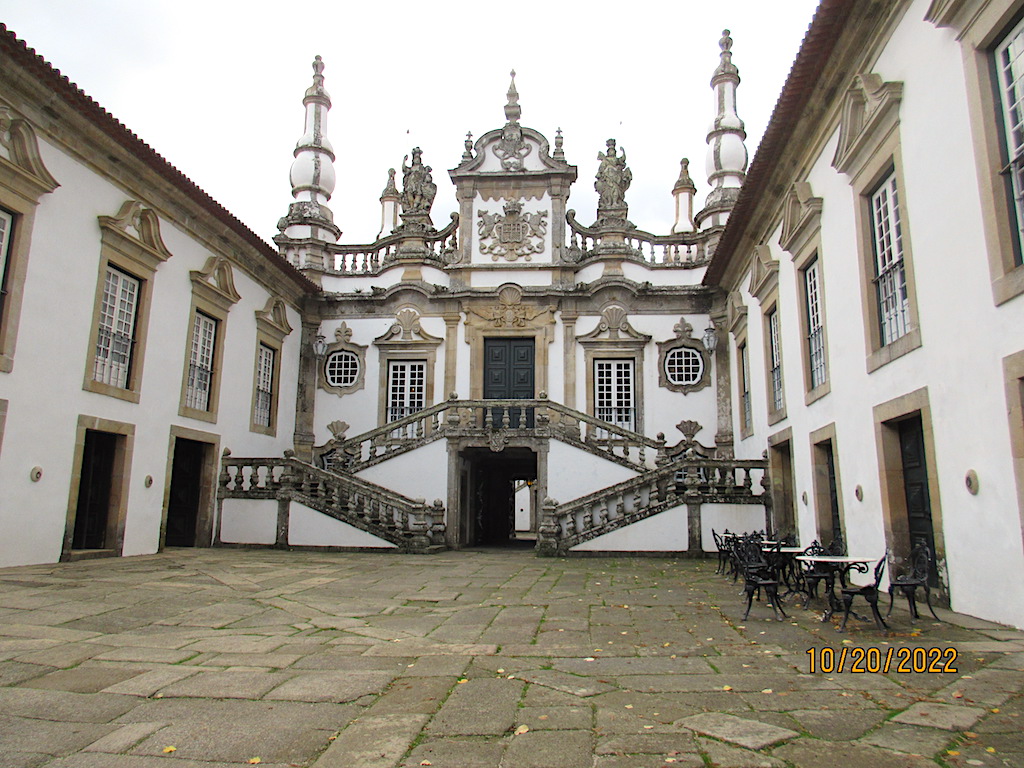
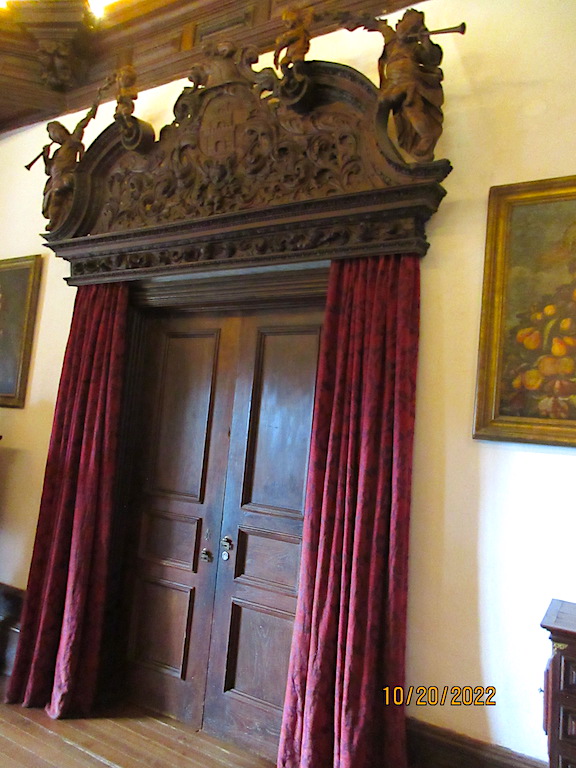
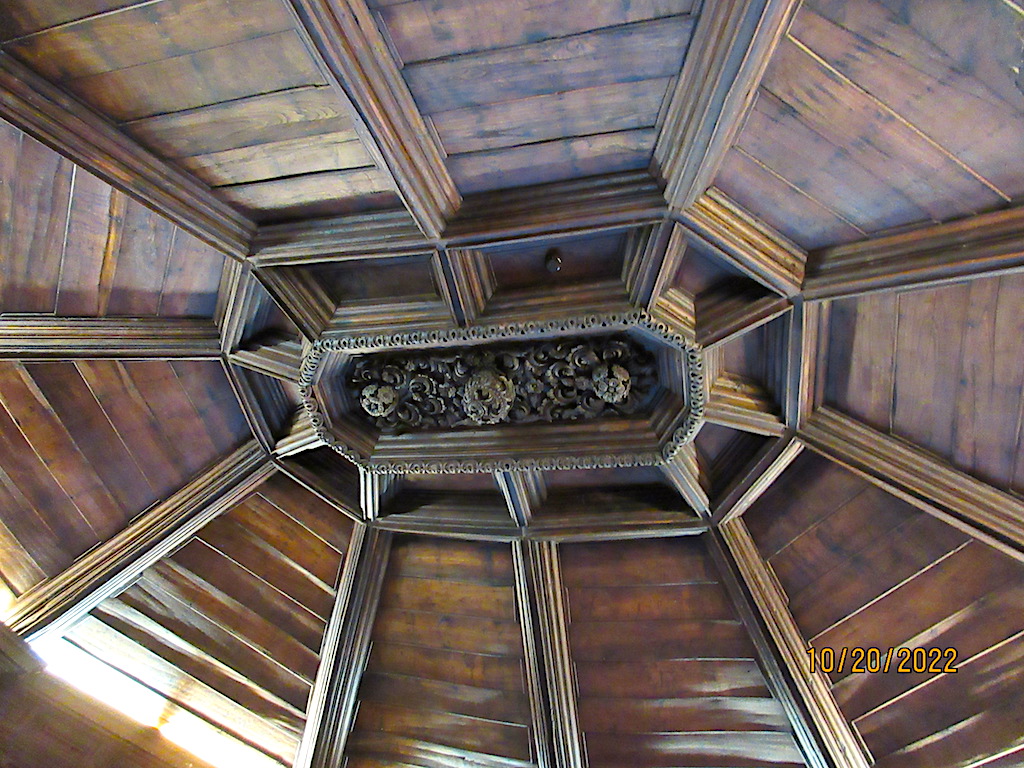
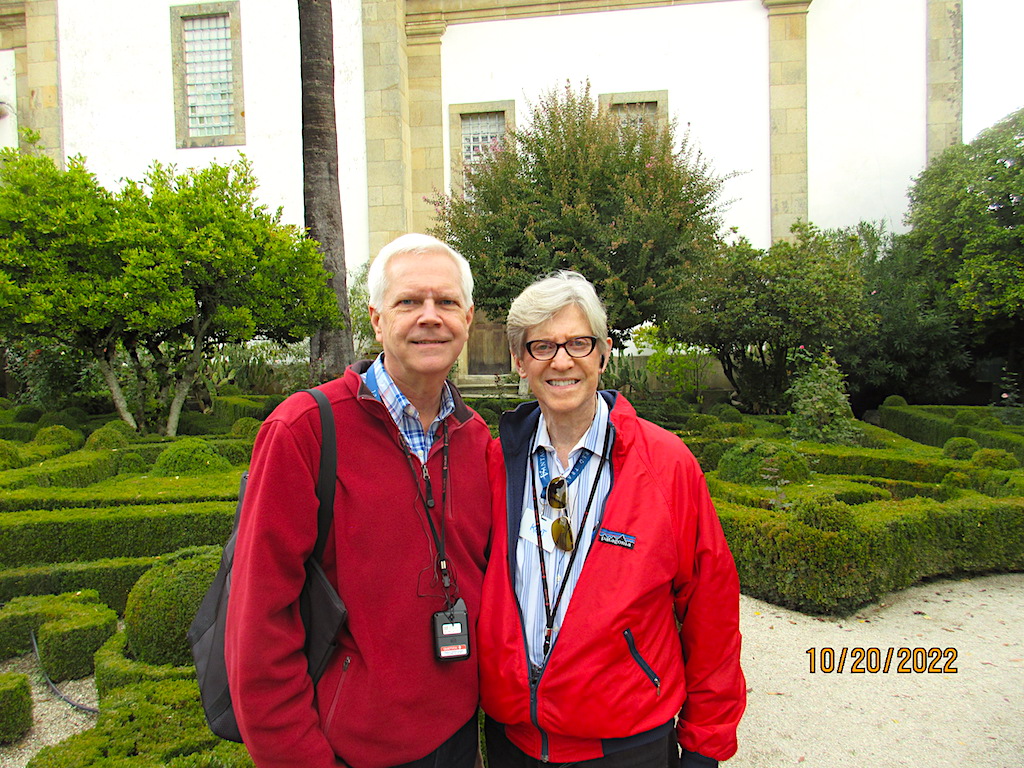
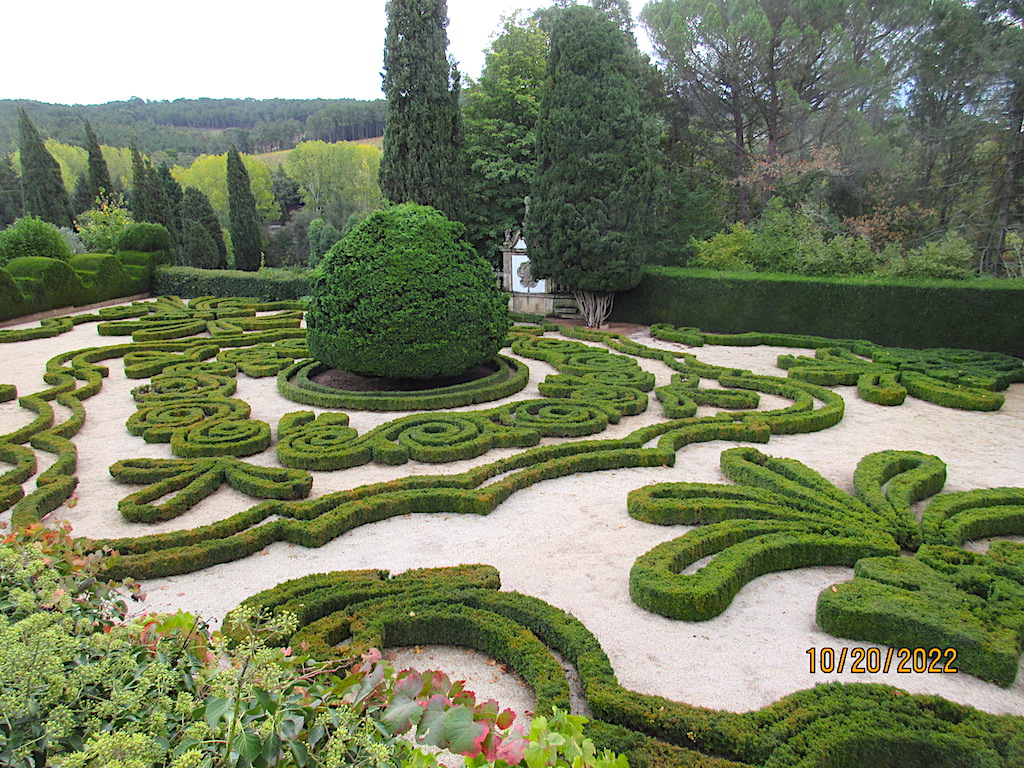
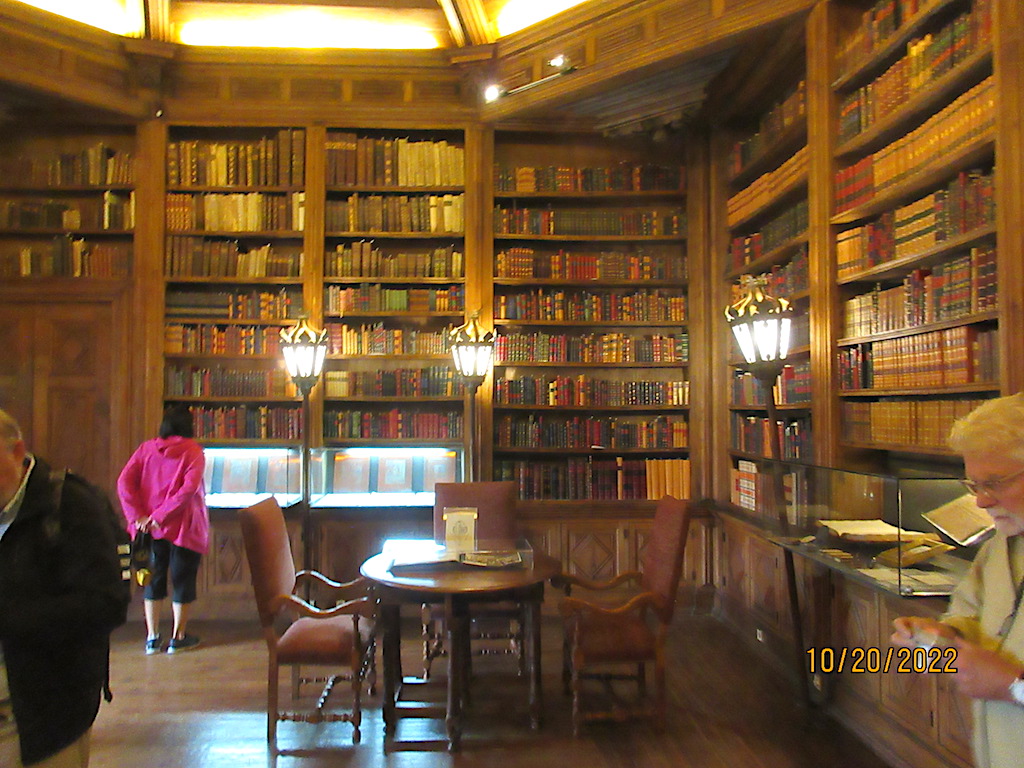
The village along the Douro River where we were docked on this day is called Pinhoa (population 1,000) although we took a bus to Vila Real about one-hour from the ship. Vila Real is the capital and largest city of the Vila Real District in northern Portugal, with a population of about 55,000 inhabitants. Founded in 1289 by King Denis of Portugal, Vila Real means Royal Town. The town has housed more members of the royal family during the middle ages than any other settlement in Portugal, with the exception of Lisbon. This area is known for its vineyards and export of red, white and pink wines.
We visited the Mateus Palace of the Mateus winery fame. The palace is made up of three primary buildings; the manor, the winery and the chapel. The winery buildings date from the 16th century and were modified in the 18th century, around 1740. The current manor replaced a former family residence in the same location in the early 1600’s. In 1910, it was classified as a National monument.
We had a walking tour at the Mateus Manor House and Gardens including a maze of manicured hedgerows, elegant gardens and a lake. The manor house has an extraordinary history and the interior rooms that are open to the public (only about seven) are filled with exception art, furnishings, books, sculpture, china and more. The ceilings are made of chestnut wood and the floors are a type of pine. Each window and interior set of doors has an elaborately hand-carved cornice box with tapestry draperies hanging to the floor. The library is filled is six-thousand collectable books, many of them handwritten.
The gardens of the manor house are very beautiful even at this time of year when the spring and summer flowers have begun to fade. In the front of the house is a large reflecting pool which reflects the grandness of the manor house in its waters. Next to the reflecting pool is an enormous pine tree planted in 1870. The grounds around the manor include flowers, fruits and vegetable gardens.
Our next stop was a visit to the Quinta da Avessada wine estate in the village of Favaios where we toured the winery and enjoyed a delicious lunch. This 2,500-acre wine estate is located on one of the highest peaks in the center of the Douro Valley (about 2,000 feet in elevation) with views of the entire region. There are four buildings dating back nearly 100 years surrounded by some 625 acres of planted grapevines, mostly the Muscat variety. They produce Moscatel de Favaios (Muscat of Favaios) which is a national aperitif or liqueur. To increase the world’s knowledge of this region’s wine, they started a cooperative with other growers in the area to expand their market share.
Luis, one of the owners of the family business, was there to greet us and he was quite a character. He would introduce each course of our five-course lunch with a funny story. He would laugh at his own jokes and seemed really happy to be entertaining us. We enjoyed a salad and bread course followed by three appetizers, followed by a soup, followed by pot roast with vegetables, followed by three different dessert samples. All of this while the wine glasses never went empty. After the meal we enjoyed a Moscatel liqueur and a grappa. It was way too much food and drink for an afternoon lunch at 1:45 pm.
After lunch we took a short tour of the neighboring building where they manually stomp the grapes in large concrete vats. Then we saw the barrel room and gift shop where you could purchase wines by the bottle and several other souvenirs like small paintings from a local artist. It was a great afternoon visit to the winery. We did have some rain showers throughout the day but usually while we were on the bus or inside so we never needed our umbrellas.
After dinner we enjoyed Portuguese folk music by a group called Castas do Douro. The group of nine family members performed for an hour a variety of popular folk songs from the region. After the popular songs they also performed a few Fado style songs. This folk music typically has harsh lyrics accompanied by a wire strung acoustic guitar and is sung with the sadness of poverty and loneliness, but remains dignified and fully in control. This genre of music has its roots from the 15th century when women longed for their husbands that sailed the never-ending seas. Today, many artists have used this style of music to express their opinions on social and political issues.
